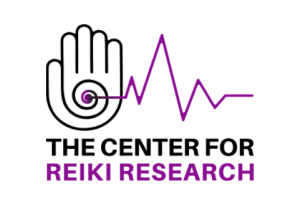The Touchstone Process
The Touchstone Process is a uniquely rigorous peer review method for analyzing a group of scientific studies in a particular field. Its end product is a set of critical summaries derived from an impartial and consistent process. While the process incorporates existing best practices for scientific review and no one step is unique to Touchstone, the scope of included practices is unprecedented in the field of complementary and alternative medicine.
The Touchstone Process is the outgrowth of an effort to determine the current state of Reiki research. William Rand, founder and president of the International Center for Reiki Training, began developing the Reiki In Hospitals website in 2005. Out of this effort, the Center for Reiki Research was formed with the intention of compiling a list of current evidence-based research on Reiki and making that information easily accessible to both the Reiki and the medical/scientific communities through the Internet.
Rand gathered a group of research professionals who could locate relevant studies and write cogent summaries. Using the Reiki In Hospitals database, a request was made for volunteers in January 2008. Within a short time a team of twelve qualified researchers formed. Nancy Merrifield was instrumental in organizing the group and coordinating their activities, which included developing the concept for the Touchstone Process.
The group’s intention was to make the review process as impartial and standardized as possible so that each study would be subject to the same uniform level of analysis and summarization. To this end, working groups were created for each stage of the project, each with a group leader. Standardized forms were used to gather metrics. The groups were:
Article Retrieval Team
The two members of this team searched for and gathered studies, making use of services such as PubMed, National Library of Medicine at NIH and the Cochrane Collection. Only studies published in the U. S. were accessed and from this group, only those published in peer-reviewed journals were considered, as these had already gone through a process of professional scrutiny.
Article Review Team
A team of eight developed special forms for gathering metrics from each study in order to maintain uniformity. Forms were developed for both qualitative and quantitative studies. Each study was separately reviewed by two members of the group. If there were significant differences in the reviews of a particular study, the group leader requested a third review.
Summarization Team
With seven members, this team “translated” the expert reviews into pared down summaries that convey the important information in each article in an easily understandable way. A summary form was used to maintain uniformity in language and overall content throughout the group of summaries.
Key Features of the Touchstone Process
The most salient feature of this process may be the inclusion of all U.S. published peer-reviewed articles devoted to Reiki clinical and preclinical research. Evaluating this entire body of evidence-based research was a feasible endeavor because prospectively designed studies have been conducted only over the past 20 years.
The evaluation forms used to review Reiki articles were standardized and piloted prior to implementation. It is common, of course, to use evaluation forms for review of manuscripts that are submitted for publication in peer-reviewed journals. The difference in this case is that all articles in the field were rated using the same consistent scoring system.
The use of cross-functional teams for each step in the process is also unusual. Although a scientific paper will often be reviewed by several independent subject matter experts, the individual reviewers are usually assigned to a single study, not to an entire body of literature.
Likewise, the use of a numerical scoring system is not unique, but the follow-up analytics relating to numerical vs. word scoring and scoring vs. maturity of the field is a hallmark of the Touchstone Process.
The inclusion of a summarization step separate from the review step is an important development for placing the research into an accessible context for interested laypersons.
Lastly, the process was created to offer actionable insight for the future direction of research and for highlighting areas in which treatment with Reiki may NOT be beneficial. Achieving this balance is one of the major contributions of the Touchstone Process

